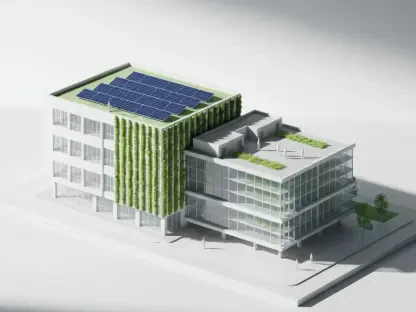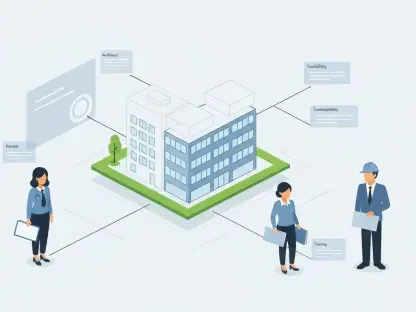As the global construction industry surges forward into a decade of unprecedented growth and transformation from 2025 to 2035, the Paint and Construction Chemicals Market stands at the forefront of innovation and demand. This critical sector, encompassing essential products like paints, coatings, adhesives, and sealants, plays a pivotal role in shaping modern infrastructure and building projects worldwide. With rapid urbanization, escalating infrastructure investments, and a heightened focus on sustainability, the market is poised to experience significant expansion. Stakeholders across the spectrum, from manufacturers to investors, are keenly observing the emerging trends that will define this dynamic landscape over the next ten years. This article delves into the key drivers, technological advancements, regional variations, and competitive challenges that are set to influence the trajectory of this vital industry, providing a comprehensive guide for navigating its evolving complexities and seizing opportunities in a fast-changing environment.
Driving Forces Behind Market Expansion
The Paint and Construction Chemicals Market is on track for robust growth over the forecast period, propelled by a surge in construction activities across various sectors, including residential, commercial, and industrial domains. Urbanization serves as a primary engine, particularly in developing regions where expanding populations necessitate new housing, commercial spaces, and public infrastructure. Governments worldwide are funneling substantial investments into large-scale projects, further amplifying the demand for high-quality materials that ensure durability and performance. Beyond sheer volume, the nature of this demand is evolving as consumers increasingly prioritize products that align with modern standards of safety and longevity. This convergence of demographic shifts and policy support creates a fertile ground for market expansion, positioning the industry as a cornerstone of global economic development in the coming years.
Another critical factor fueling this growth is the rise in disposable incomes, which empowers consumers to invest in superior construction materials and finishes. This trend is particularly evident in emerging economies where a burgeoning middle class is driving demand for aesthetically pleasing and durable products. At the same time, regulatory frameworks are tightening, pushing manufacturers to innovate and meet new benchmarks for environmental and structural standards. The interplay between economic prosperity and policy mandates is reshaping market dynamics, compelling companies to adapt swiftly to maintain relevance. Additionally, the ongoing recovery from global disruptions like the COVID-19 pandemic has led to a renewed focus on infrastructure as a means of economic stimulus, further bolstering the market’s upward trajectory and highlighting its resilience amid external challenges.
Innovations Shaping the Future
Technological advancements are redefining the Paint and Construction Chemicals Market, with cutting-edge developments such as smart coatings and nanotechnology leading the charge. These innovations are not mere incremental improvements but represent a paradigm shift in how products perform, offering enhanced durability, resistance to corrosion, and even self-healing capabilities. Such features cater to the growing need for materials that can withstand harsh environmental conditions while reducing maintenance costs over time. Companies that prioritize research and development are finding themselves at a competitive advantage, as they can deliver solutions that meet the sophisticated demands of modern construction projects. This focus on technology is setting a new benchmark for what constitutes quality in the industry, pushing all players to elevate their offerings.
Sustainability is equally central to the market’s evolution, as environmental concerns increasingly dictate both consumer preferences and regulatory policies. The shift toward eco-friendly formulations, such as low-VOC paints and bio-based chemicals, reflects a broader commitment to reducing carbon footprints and promoting green building practices. Manufacturers are responding by integrating sustainable practices into their production processes, ensuring compliance with stringent global standards while appealing to a market that values environmental responsibility. This trend is not just a reaction to external pressures but a strategic move to build brand loyalty among environmentally conscious consumers. As sustainability becomes a core pillar of industry innovation, it is clear that the future of construction chemicals will be defined by a balance between performance and ecological impact.
Regional Variations and Opportunities
Geographically, the Paint and Construction Chemicals Market exhibits diverse growth patterns, with Asia-Pacific emerging as a dominant force due to rapid economic progress in nations like China and India. These countries are experiencing a construction boom, driven by population growth, urban expansion, and significant government initiatives aimed at infrastructure development. The sheer scale of projects in this region, from residential complexes to transportation networks, creates an immense demand for a wide range of chemical products. Moreover, the relatively low cost of labor and materials in these markets allows for competitive pricing, attracting both local and international players. This dynamic positions Asia-Pacific as a critical hub for market growth, offering substantial opportunities for investment and expansion over the next decade.
In contrast, mature markets like North America and Europe are focusing on different priorities, with an emphasis on renovation and retrofitting of existing structures rather than new builds. These regions are at the forefront of adopting specialty chemicals and innovative solutions that enhance energy efficiency and meet green certification standards. The demand here is driven by a need to modernize aging infrastructure while adhering to strict environmental regulations, which in turn fuels innovation in high-performance products. Meanwhile, the Middle East and Africa are gaining traction as high-potential areas, with ambitious projects in countries like the UAE and Saudi Arabia transforming urban landscapes. South America, though smaller in market share, is also showing promise, particularly in Brazil, where construction investments are on the rise, signaling untapped potential for growth in diverse global markets.
Competitive Challenges and Strategic Responses
The competitive landscape of this market is characterized by a blend of global powerhouses and regional specialists, each striving to carve out a larger share through distinct strategies. Major players like BASF and SIKA Egypt leverage their extensive portfolios and international presence to dominate, while localized firms such as Kapci and Pachin Paints excel by offering tailored solutions that meet specific regional needs. This mix creates a highly competitive environment where innovation, pricing, and market adaptability are key differentiators. Companies are increasingly relying on strategic partnerships and mergers to bolster their capabilities, while also investing in market research to understand consumer trends and competitor performance. Staying ahead requires a deep understanding of these dynamics, making competitive analysis an essential tool for sustained success.
However, the market is not without its challenges, as intense competition and raw material price volatility create significant hurdles for profitability. The availability of low-cost alternatives further complicates the landscape, putting pressure on established brands to justify premium pricing through superior quality or innovation. Additionally, the lingering effects of global disruptions, such as the COVID-19 pandemic, have reshaped supply chains and forced a rapid pivot toward digital tools and processes. Adapting to these realities demands agility, with businesses needing to balance cost management with investments in technology and sustainability. Strategic pricing, alongside a commitment to developing resilient supply networks, emerges as a critical response to these pressures, ensuring that companies can navigate obstacles while capitalizing on the market’s promising growth outlook.
Pathways for Future Success
Reflecting on the trajectory of the Paint and Construction Chemicals Market over the past years, it has become evident that adaptability and foresight are indispensable for stakeholders navigating this complex sector. The period leading up to now saw remarkable strides in addressing consumer demands for durability and environmental responsibility, with many companies successfully integrating sustainable practices into their core operations. The challenges posed by economic fluctuations and global disruptions were met with innovative solutions, from digital adoption in supply chains to the development of advanced materials that redefined industry standards. These efforts laid a strong foundation for the growth witnessed in various regions, particularly in emerging economies where infrastructure needs were most acute.
Looking ahead, the focus should shift toward actionable strategies that build on these past achievements while addressing future uncertainties. Investment in research and development must remain a priority to drive the next wave of product innovations, especially in areas like smart coatings and eco-friendly chemicals. Tailoring expansion plans to regional dynamics will also be crucial, with a keen eye on high-growth markets in Asia-Pacific and the Middle East. Furthermore, fostering collaborations and leveraging data analytics for competitor benchmarking can provide the insights needed to stay competitive. As the industry moves into the next phase of its evolution, embracing these pathways will ensure that businesses not only keep pace with market trends but also shape the future of global construction through strategic and sustainable growth.









